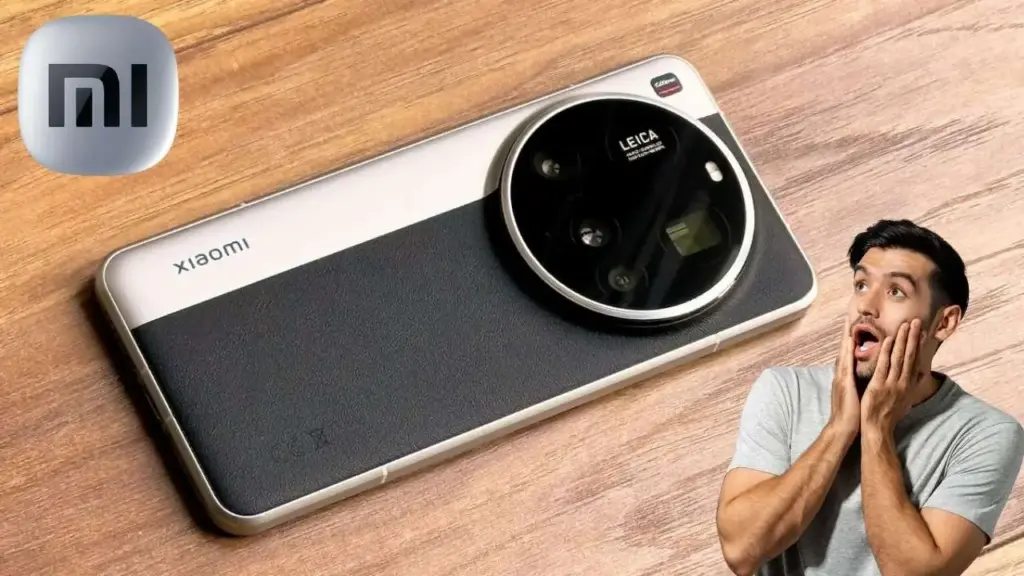Xiaomi, known for producing high-quality smartphones at affordable prices, is making waves in the tech world with its latest development: a custom smartphone chip. This new move marks a significant departure from its usual reliance on third-party chip suppliers like Qualcomm. Xiaomi’s decision to step into the semiconductor market reflects a bold shift in strategy, as the company plans to design its own chip to power its smartphones and potentially other devices. This is a fascinating development because, unlike Apple’s path of full vertical integration, Xiaomi aims to create a more adaptable and versatile chip. So, what does this mean for the future of Xiaomi and the broader tech market?

The new Xiaomi smartphone chip will allow the company to reduce dependency on suppliers, boost performance, and offer a more integrated experience across its product lineup. This chip isn’t just for smartphones—it will also power other Xiaomi devices, including laptops, IoT products, and even electric vehicles. In this article, we’ll dive deeper into Xiaomi’s ambitious plan, explore how it will impact the market, and compare it to Apple’s own strategy of chip development.
Xiaomi’s New Smartphone Chip: A Different Approach
Xiaomi’s decision to develop its own smartphone chip is a significant step forward for the company. While it’s true that companies like Apple and Samsung have led the way with custom-built chips for their smartphones, Xiaomi is taking a different approach. Instead of aiming for full vertical integration, like Apple’s strategy with its A-series chips, Xiaomi’s focus is on building chips that can power not just smartphones but a range of products across its ecosystem. This means that Xiaomi’s chips could be used in its growing portfolio of devices, from smartphones to IoT products and beyond.
By taking control over its semiconductor technology, Xiaomi aims to reduce costs and increase the performance of its devices. This strategic move is also designed to give Xiaomi more control over its supply chain, allowing the company to avoid potential issues with chip shortages or price hikes from third-party suppliers. But the key difference between Xiaomi and Apple is that Xiaomi wants to keep its chips versatile and scalable, making them suitable for a wider range of products. Apple, on the other hand, has made its custom chips a central part of its vertically integrated ecosystem.
Xiaomi Working on New Smartphone Chip
| Key Information | Details |
|---|---|
| Development Focus | Versatile chips for smartphones and broader IoT ecosystem |
| Strategic Goal | Reduce reliance on third-party suppliers like Qualcomm |
| Target Devices | Smartphones, laptops, IoT devices, electric vehicles |
| Chip Approach | More adaptable and scalable, not focused on full vertical integration like Apple |
| Reason for Development | Cost reduction, enhanced performance, better integration |
| Market Impact | Potential to disrupt the semiconductor market and improve Xiaomi’s competitive edge |
Xiaomi’s decision to develop its own smartphone chip is an exciting move that could reshape the company’s future. By taking control of its semiconductor technology, Xiaomi will be able to reduce costs, improve performance, and offer a more integrated experience across its products. While the company’s approach differs from Apple’s strategy of vertical integration, it could provide Xiaomi with the flexibility to innovate in ways that other tech giants cannot.
As Xiaomi continues to develop its chip, it will be interesting to see how this move impacts the broader smartphone and tech market. Will Xiaomi’s chip be able to compete with Qualcomm and MediaTek? Can it unlock new possibilities for Xiaomi’s growing portfolio of devices? Only time will tell, but one thing is for sure: Xiaomi is positioning itself to play a more influential role in the future of consumer electronics.
The Importance of Custom Chips in the Smartphone Industry
Custom chips are increasingly becoming a game-changer in the smartphone industry. Apple’s A-series chips are prime examples of how in-house semiconductor development can improve a device’s performance. Apple has used its chips to fine-tune the software and hardware experience, allowing for unmatched optimization, especially when it comes to power efficiency and processing power. Companies like Samsung and Huawei also have their own custom chips (Exynos and Kirin, respectively), which provide similar advantages for their devices.
For Xiaomi, creating its own chip is all about improving the user experience. By designing chips that are tailor-made for its devices, Xiaomi can boost performance, battery life, and feature integration. This allows Xiaomi to differentiate itself from other Android manufacturers who rely on third-party chips, giving the company more flexibility to innovate and optimize its products.
What sets Xiaomi apart, however, is its approach. Rather than aiming for full vertical integration—like Apple—Xiaomi is focused on designing a chip that can work across a broad range of products. This flexibility means Xiaomi can build a unified ecosystem that is not limited to smartphones. The company can use its chips to power everything from smartphones to laptops, smart TVs, IoT devices, and even electric vehicles.
Xiaomi’s Plans to Compete with Qualcomm and MediaTek
Currently, Qualcomm and MediaTek dominate the smartphone chip market. These companies are the go-to suppliers for Android smartphones, with Qualcomm often being the preferred choice for premium devices. However, with Xiaomi now designing its own chips, the company hopes to lessen its reliance on these industry giants. By doing so, Xiaomi can control its costs and, potentially, avoid price hikes or shortages that may arise from relying on third-party suppliers.
Xiaomi’s custom chip would give the company more control over its devices’ performance and battery life. By reducing reliance on Qualcomm and MediaTek, Xiaomi can lower costs, streamline its supply chain, and gain more leverage in the highly competitive smartphone market. Additionally, Xiaomi’s chips would be designed with its specific features and requirements in mind, making them more efficient than off-the-shelf solutions. For consumers, this could mean better value and more advanced features in Xiaomi’s smartphones.
However, building a custom chip also comes with its challenges. Developing cutting-edge semiconductor technology is no small feat, and Xiaomi will need to invest heavily in research and development to match the performance of established players like Qualcomm and MediaTek. The competition will be fierce, but if Xiaomi can successfully develop a chip that delivers on performance and cost-effectiveness, it could give the company a significant edge in the market.
The Road Ahead for Xiaomi’s Chip Development
Xiaomi is still in the early stages of developing its custom chip, and the journey ahead won’t be easy. However, the company’s decision to venture into the semiconductor space could pay off in the long run. If Xiaomi can build a chip that meets its performance expectations and integrates seamlessly with its growing ecosystem of products, it could set the stage for a new era of technological innovation.
Xiaomi’s focus on versatility—designing a chip that can work across multiple devices—could be a key differentiator in the market. While Apple and other companies have focused primarily on smartphone chips, Xiaomi’s broader approach could enable it to create a unified ecosystem of products powered by its custom chips. If successful, this could open up a range of new possibilities, from smarter homes to more efficient electric vehicles.
Vivo Bringing Origin OS to India Soon: Here’s What It Means for Your Phone
Redmi Powerful 5G Phone: 500MP Camera & Massive 9000mAh Battery at ₹7,499
FAQs About Xiaomi Working on New Smartphone Chip
1. Is Xiaomi developing its own chips for smartphones?
Yes, Xiaomi is developing its own custom chips for smartphones, which will help the company reduce dependency on third-party suppliers like Qualcomm and MediaTek.
2. How will Xiaomi’s custom chips affect its smartphone performance?
Xiaomi’s custom chips are designed to improve performance, power efficiency, and integration with the company’s devices, offering a better overall user experience.
3. Will Xiaomi’s chips be used in other products beyond smartphones?
Yes, Xiaomi plans to use its custom chips across a range of devices, including smartphones, laptops, IoT products, and even electric vehicles.
4. How does Xiaomi’s chip development differ from Apple’s?
Unlike Apple’s fully vertically integrated approach, Xiaomi focuses on creating versatile and scalable chips that can power multiple devices in its ecosystem, rather than limiting them to just smartphones.
5. Can Xiaomi compete with Qualcomm and MediaTek in the smartphone chip market?
While it’s still early, Xiaomi’s custom chips could potentially disrupt the market by offering more tailored solutions for its products, thus reducing reliance on third-party suppliers and giving it more control over performance and costs.
















